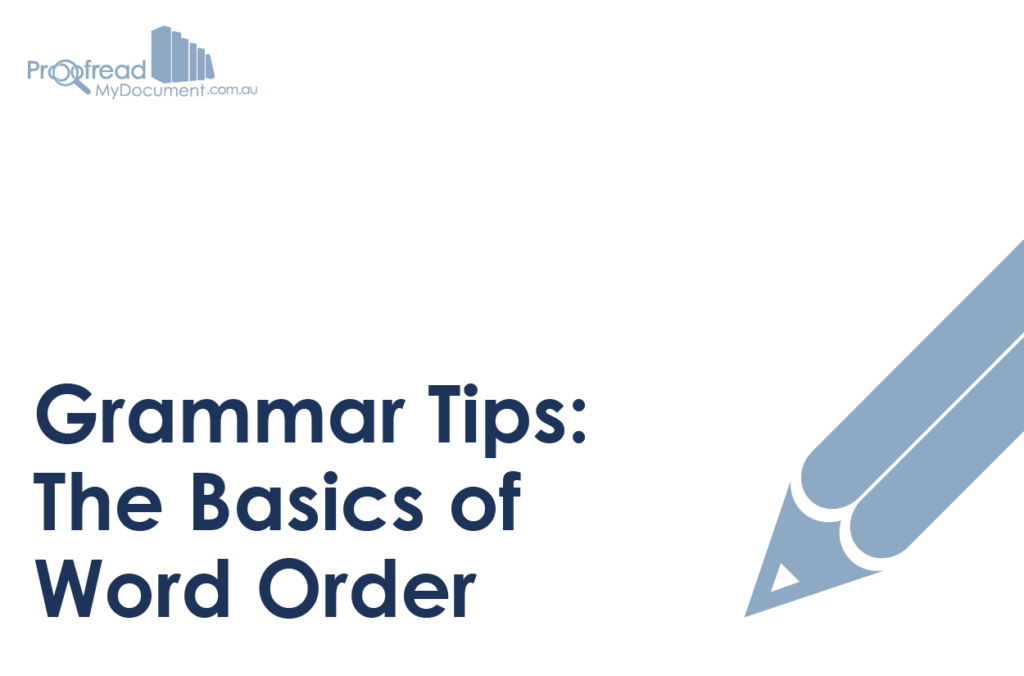If you know how to construct a grammatical sentence, you should find it much easier to avoid mistakes in your written work (especially if English isn’t your first language).
As such, today we’re looking at the basics of word order in English sentences.
Word Order (Subject, Verb and Object)
Most English sentences use a subject + verb + object (SVO) word order. The most basic elements you need for a grammatical sentence, though, are a subject and a verb.
The subject in a sentence is the person or thing that is behaving or acting in a particular way, while the verb describes an action or state of being:
The woman walked.
Here, the subject is ‘the woman’, since this is the person who is acting. The verb is ‘walks’ and specifies the action being performed by the subject.
We add an object to a sentence when we’re using a transitive verb, as this means that something is being acted upon. For example:
The boy threw the ball.
Here, the subject (‘the boy’) and the verb (‘threw’) are followed by an object (‘the ball’).
This is necessary because ‘threw’ requires an object to make sense: i.e. ‘The man threw’ by itself would be incomplete, since you can’t ‘throw’ without throwing something!
(Photo: keijj44)
Transitive and Intransitive Verbs
Some words can be used either with or without an object. In the example above, for instance, ‘walked’ is used as an intransitive verb. But it can be used as a transitive verb with an object:
Find this useful?
Subscribe to our newsletter and get writing tips from our editors straight to your inbox.
The woman walked the dog.
Here, ‘walked’ is accompanied by the object ‘the dog’. This changes the meaning from the first example above: the woman is now taking her dog for a walk.
(Photo: State Library of Queensland)
In all of these cases, however, the word order is subject + verb + object. It would be possible to rearrange the sentences, but not without changing them significantly and using a more complicated construction. As such, the SVO word order is standard.
Indirect Objects
Sometimes a sentence will also include an indirect object. This happens when someone or something is a recipient of the direct object:
The woman gave the bone to the dog.
Here, the indirect object is ‘the dog’ since it is receiving the direct object (‘the bone’), as indicated via the preposition ‘to’. The word order is subject + verb + object + preposition + indirect object.
However, the indirect object can also come immediately after the verb. When this is done, no preposition is required:
The woman gave the dog the bone.
In this case, the word order is subject + verb + indirect object + object. This is a case where it’s important to consider word order when writing a sentence, as you should only include a preposition if the indirect object appears after the direct object.
